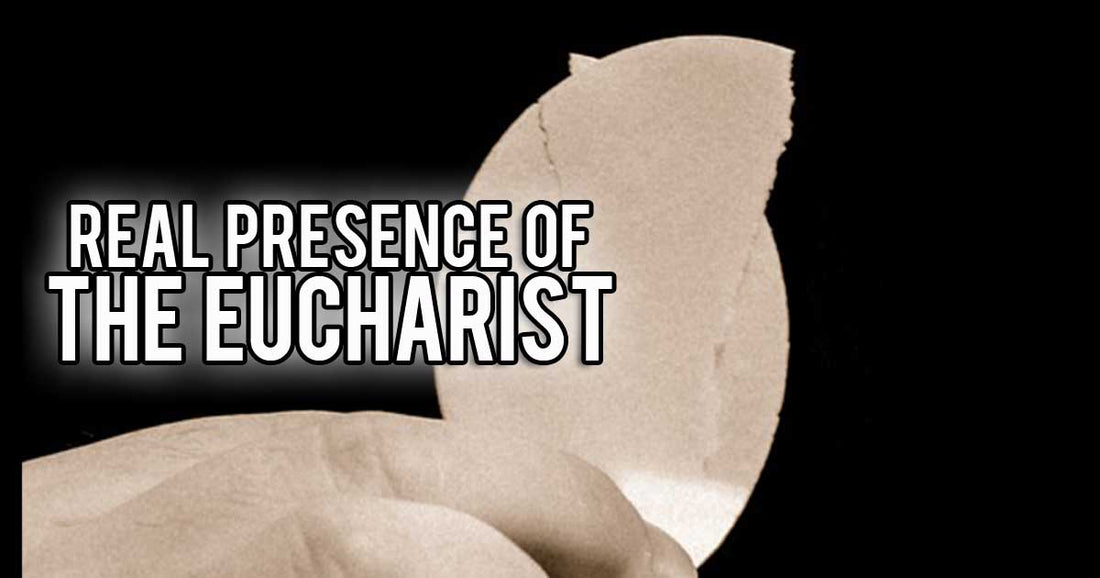
Real Presence of the Eucharist
Share
As we approach Thanksgiving, it is fitting to point out that the word ‘Eucharist’ literally means ‘thanksgiving’ in Greek. To the early Christians, celebrating the Eucharist at Mass was a way of giving thanks to God. But they chose an unusual way to give thanks: Catholics claim that Jesus is truly present in the bread and the wine of the Eucharist.
Let’s discuss what the Catholic Church means by the Real Presence of the Eucharist.
This is an extremely challenging belief for other Christian denominations to understand. In fact, it is at the center of the division between Catholics and many other Protestant groups. From the time of the early Church, people claimed that Catholics were cannibals who ate flesh and blood. Many modern groups take an opposite approach and claim that the bread and wine are harmless symbols, because they simply remind us of Christ’s words at the Last Supper. All these misconceptions are wrong.
Catholic beliefs about the Eucharist are rooted in Jesus’s own statements. At the Last Supper (Luke 22:19), Jesus declared while holding the bread, “This is my body which is given for you.” He did not say it was a symbol or a reminder or a representation. He said it is.
Similarly, in John 6: 53, Jesus said, “Truly, I say to you, unless you eat the flesh of the Son of man and drink his blood, you have no life in you.” These statements are clear, but even in Jesus’s time they were controversial. John 6:66 tells us that immediately after Jesus said this, many of His followers left. He had the opportunity to change or clarify his statement, but He didn’t. He meant exactly what He said. Shouldn’t we trust Jesus to tell the truth, even if it requires faith in something we can’t completely understand?
In 1551, the Council of Trent, addressed Catholic beliefs about the Eucharist, which were under attack during the Protestant Reformation. “Because Christ our Redeemer said that is was truly his body that he was offering under the species of bread, it has always been the conviction of the Church of God, and this holy council now declares again, that by the consecration of the bread and wine there takes place a change of the whole substance of the bread into the substance of the body of Christ our Lord and of the whole substance of wine into the substance of his blood. This change the holy Catholic Church has fittingly and properly called transubstantiation.” (Catechism of the Catholic Church 1376).
Transubstantiation is the Catholic belief that although the Eucharist still looks and tastes like bread or wine, it has transformed into the Body and Blood of Christ. Therefore, Christ is truly, physically present in the Eucharist. The Council of Trent affirmed that “In the most blessed sacrament of the Eucharist, the body and blood, together with the soul and divinity, of our Lord Jesus Christ, and, therefore, the whole Christ is truly, really, and substantially contained.” (CCC, 1374)
This is what Catholics mean by the Real Presence of Christ in the Eucharist. It is not a symbol or a reminded of something that happened long ago. Instead, the Eucharist is Christ’s ongoing gift to the Church. Through this sacrament, “he remains mysteriously in our midst as the one who loved us and gave himself up for us.” (CCC 1380).
When we understand the gift of the Eucharist, it is exciting and awe-inspiring. Even though it is a gift that requires our faith, it is still worthy of praise and thanksgiving.
God bless,
Lizann
Contributor for the Christian Catholic Shop
P.S. Save 10% On Your Entire Order at Christian Catholic Shop. Use Coupon Code: "blog10" at checkout. God Bless!

Lizann is a Catholic military wife and mother who loves to share about her faith. Read more from Lizann and our other contributors on the Christian Catholic Shop blog.

